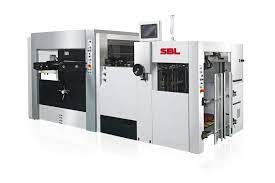Shaping Innovation: The Essential Role of Die-Cutting Machinery in Modern Manufacturing
In the realm of manufacturing, precision and versatility are crucial for creating high-quality products. Die-cutting machinery, pivotal in shaping materials into intricate designs, has revolutionized numerous industries by offering precision cutting solutions. This article delves into the world of die-cutting machinery, exploring its functionalities, the benefits it brings to manufacturing, and the industry-wide impacts of its technological advancements.
Introduction to Die-Cutting Machinery
Die-cutting machinery is designed to cut, shape, or form materials using a die—a specialized tool used to punch specific shapes out of a substrate. Commonly used materials include paper, cardboard, metal, plastic, and fabric. This machinery finds applications in industries such as packaging, automotive, textile, and electronics, where high precision and replication of specific patterns are essential.
Key Features of Modern Die-Cutting Machines
Modern die-cutting machines boast advanced features that enhance their efficiency and usability:
- Complex Cut Capabilities: These machines can create highly intricate designs that are difficult or impossible to achieve with traditional cutting methods.
- High-Speed Production: Many die-cutting machines are capable of operating at high speeds, significantly boosting production rates.
- Versatility: Equipped to handle various materials and thicknesses, die-cutting machines can switch between jobs with minimal downtime.
- Automated Operation: Advanced models feature automation technologies that streamline the cutting process, reduce labor costs, and minimize human error.
Benefits of Using Die-Cutting Machinery
Implementing die-cutting machinery in manufacturing processes offers multiple advantages:
- Enhanced Productivity: Automation and the ability to operate continuously increase overall production throughput.
- Precision and Consistency: Each cut is precise, ensuring that every product is consistent in shape and size, which is crucial for assembly and packaging.
- Material Efficiency: Die-cutting reduces material waste by maximizing the number of cuts from a single material sheet.
- Customization: The flexibility to change dies quickly makes it easy to customize designs, accommodating short runs and special orders without significant additional costs.
The Impact on the Packaging Industry
Die-cutting machinery has notably transformed the packaging industry by enabling the production of complex box designs and window panes that enhance product visibility and consumer appeal. As packaging becomes a critical element of marketing strategies, the demand for custom, high-quality packaging solutions grows, further underscoring the importance of die-cutting technology.
Future Trends in Die-Cutting Technology
The future of die-cutting machinery looks promising with advancements geared towards even greater automation, precision, and energy efficiency. Integration with digital technologies, such as AI and IoT, will likely enhance the capabilities of die-cutting machines, allowing for smarter production processes with improved diagnostics, maintenance, and material usage.
Conclusion
Die-cutting machinery is indispensable in modern manufacturing, driving innovation across various industries by providing high-speed, precise cutting solutions. As the market continues to demand more customized and high-quality products, the role of die-cutting machinery will only grow more significant. Embracing this technology equips manufacturers with the tools necessary to succeed in a competitive marketplace, pushing the boundaries of what can be achieved in material processing.



